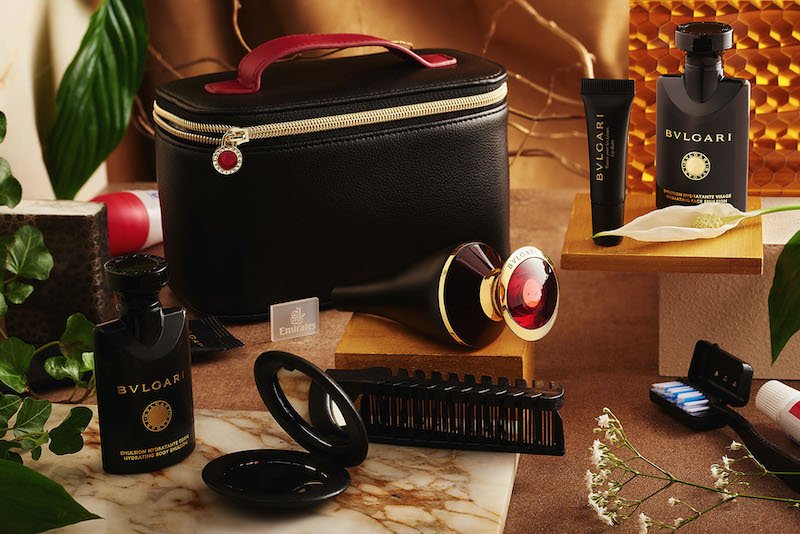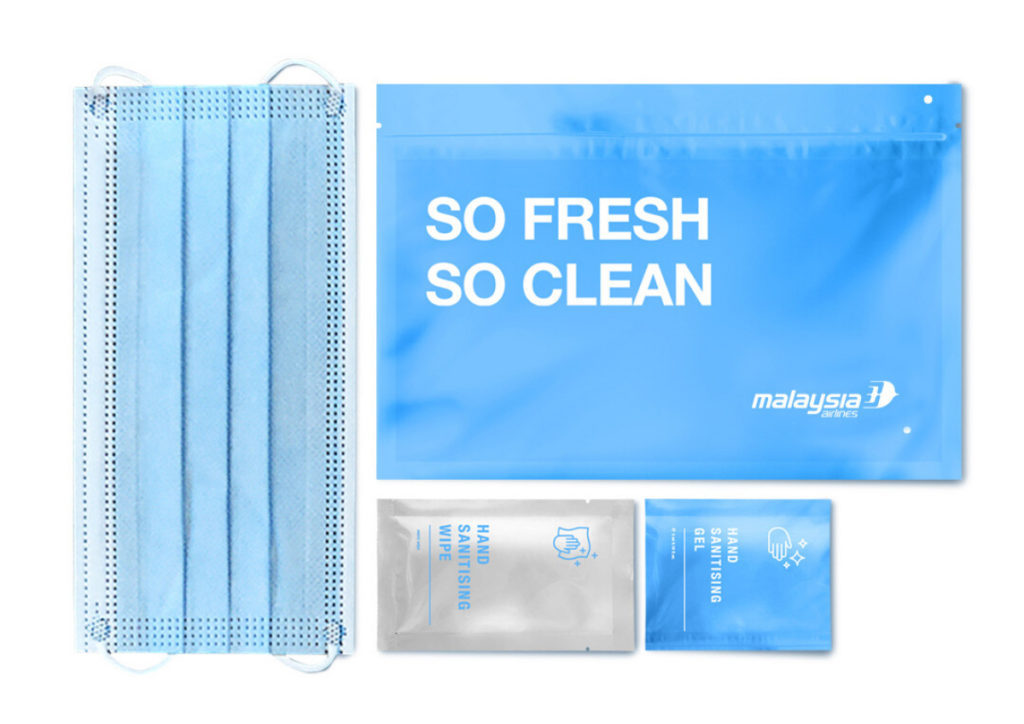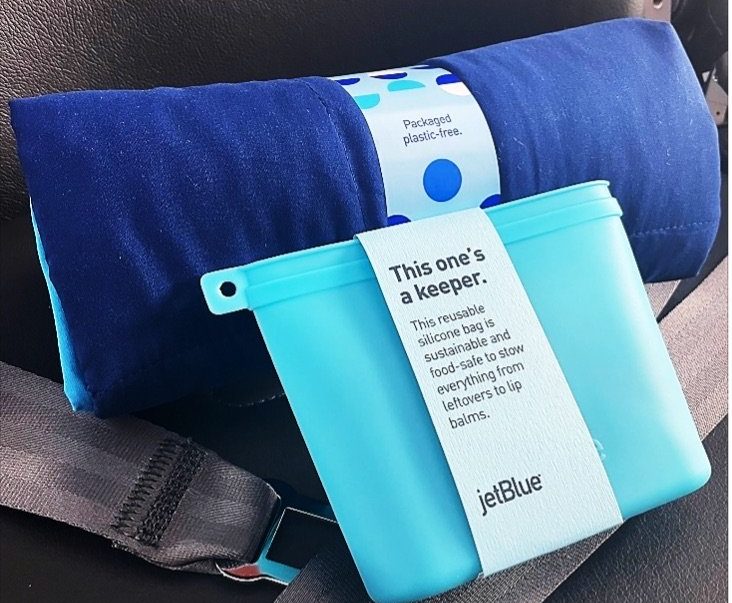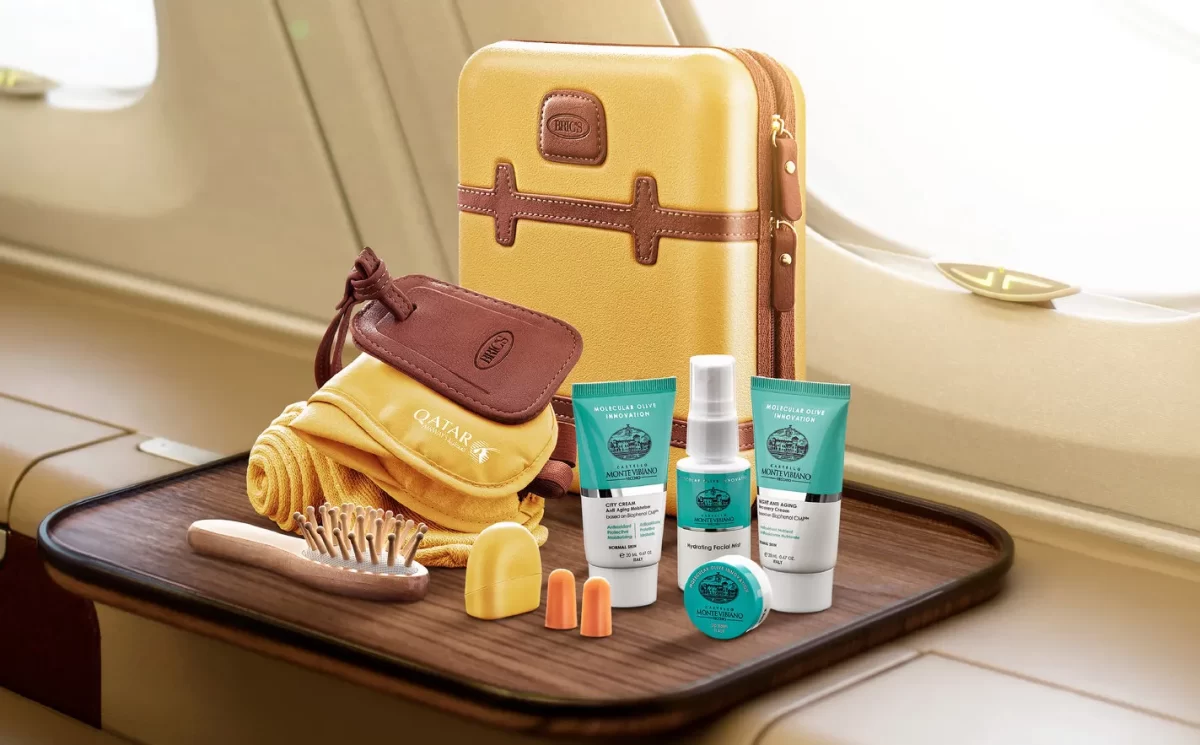The in-flight amenity kit has long been a staple of the air travel experience, particularly for those lucky enough to be gracing business- and first-class. Seen as one of the many perks of a pricier ticket, its time of recking is nigh. In a world where sustainability is increasingly at the forefront of everybody’s mind, can we justify the extravagance any longer?
Air travel is constantly changing. With airlines endlessly revealing their new first-class suites or renovated lounges, it’s undeniably an industry that runs on luxury and newness. Unsurprisingly, the humble amenity kit is a microcosm of this broader pattern: ever-changing, ever more luxurious.
The sad truth, however, is that ongoing newness and ever-increasing luxury are the epitomai of unsustainability, and the amenity kit is no exception. Despite ongoing and much-publicised efforts to make amenity kits (appear) more sustainable, this is a goal they will never reach. As such, it’s time for them to go.
Such sweeping statements should be justified, I know, so let’s start with the basics. The amenity kits of old would usually come in the form of a small bag, loaded with handy bits and pieces for your trip, sealed with a zip that inevitably broke within the first few swipes.
WATCH: Get a feel for the business class experience… Note how the amenity kit doesn’t appear.
It’s a lovely idea: your valued customers spend their hard-earned cash with you and, in some cases, spend that little bit more to fly business- or first-class. The least they should get by way of a thank-you is a little bag of goodies. Don’t get me wrong, I understand this logic and appreciate the gesture.
It can also benefit the airline and supporting businesses in another way as David Flynn, Editor-in-Chief of Executive Traveller, explains: “Airlines love using amenity kits to bring another dash of luxury to business class as well as showcasing upmarket brand partnerships…”
“You see stylish little bags from Rimowa, Tumi and Marimekko packed with skincare products from Aesop, Bylgari, L’Occitane and Salvatore Ferragamo, and this is very much about marketing those brands to that premium audience of well-heeled high flyers and letting them sample your wares.”
David Flynn, Editor In Chief at Executive Traveller
This was, according to travel writer and amenity kit collector to the stars Simon Ward, the “Golden Age” of the amenity kit. However, In the words of the great American poet Robert Frost, “Nothing Gold Can Stay…”
Here’s where things go awry: not only is the world of luxury brand partnerships in free-fall after COVID brought about an emphasis on safety, hygiene, and wellness rather than luxury, but the sustainability factor of these kits is a total mess.

Many items in the bag, and even the bag itself, are made from single-use plastics or similarly unsustainable materials. This means that for every single flight taking place, materials are being extracted from the earth and shipped to polluting factories via polluting supply chains, simply so that you can brush your teeth at 30,000 feet and then chuck them in the bin.
And – just so you don’t think we’re making a mountain out of a molehill – we thought we’d provide some figures for just how many of these kits are being produced and, in many cases, going to waste every year. Taking Emirates as a random example, here’s how many amenity kits we approximate they produce every single year…
8,081,100. Yes, you read that right. How did we get that figure? Emirates runs approximately 369 flights per day. In an Emirates Boeing 777 there are 42 Business seats, and in an Emirates A380 there are 79 Business seats – we’ve averaged these two figures out at 60 Business seats per flight. 369 flights multiplied by 60 Business seats gets you 22,140 kits per day, or 8,081,100 per year.
These figures are approximate, but they illustrate the scale of the problem and raise an important question: Kits might be a welcome luxury, but are they really worth the cost? Many airlines have realised that it is not and, as such, have shifted their focus to producing more sustainable amenity kits. That sounds like a happy compromise, right?
Not quite. Many airlines have made the change, but their idea of sustainability seems more geared towards a much-needed PR push than actually creating kits that are eco-friendly. Air France has launched kits made from recycled materials, but these kits still come with plastic packaging and single-use earphone covers. Similarly, Delta’s new kits are made from recycled aluminium, but they’re being discarded into landfill-destined bins at just the same rate as their “unsustainable” predecessors.
Perhaps even more damning than this, however, is the simple fact that people no longer rely upon their amenity kits in the way they once did, particularly in light of the ongoing COVID-19 headache which drove a paradigm shift in the way we all approach air travel, whether we liked it or not.

David Flynn summed up this phenomenon nicely: “While amenity kits are very much part of the business class experience… very frequent flyers tend to bring their own toiletries and skincare products, along with personal items such as a sleep mask.” Ironically enough, these well-prepared frequent flyers are disproportionately those occupying first- and, especially, business-class seats.
And guess what happens when the flight comes to an end? More often than not, these kits are disposed of anyway: if the bag is opened or just one item is used, the whole kit goes into the bin… and not the recycling kind. So what are airlines to do instead?
Approaches have been varied. Some airlines seem quite content to do nothing at all, ignoring the problem until it becomes a “real” (read: PR nightmare) sort of problem. Others, however, have been a little more proactive:
Singapore Airlines leads the charge, having eliminated amenity kits for business class passengers, instead stocking essentials in the lavatories and providing items like eye masks and socks upon request. Similarly, Saudia operated a Sustainable Flight Challenge where passengers could choose to have only the amenity kit bag without the contents and earn “green points.”
Though these are both good starts, you’ll notice that the removal isn’t total in either case: Singapore has only actioned it for Business, and with Saudia, it’s entirely optional. As such, the resource extraction, polluting supply chains, and all the rest – though reduced – still solider on. So, what to do in the meantime, until the industry finally realises that it’s time to kill the kit?

Once again, we turn to David Flynn, who’s been on enough flights to know the best course of action: “Amenity kits can be the ultimate souvenir from your flight and they make wonderful gifts to family and friends.”
If you don’t feel like your nearest and dearest have earned a gift, then you can always recycle it your own way: “The bags themselves probably have the most useful afterlife: they’re great pouches for storing your smartphone charger, USB cables, earbuds and other pieces of tech-to-go.” JetBlue’s latest offering is a case in point.
Either way, until airlines realise that scrapping the amenity kits would not only be a big win for the planet but an easy PR win that, I reckon, really wouldn’t undermine the luxury in-flight experience to the extent they fear it could, the impetus is on you to make proper use of your kit.
As someone with cables coming out of their eyes and a wholly unwilling approach to managing them, I’ll happily receive your unloved kit bags… My contact details are below.
